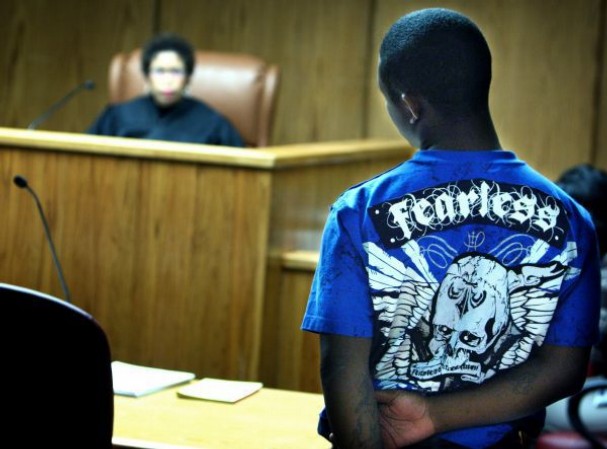 A new collection of data in a report appearing in the University of Miami Law Review suggests that not only do juvenile defendants rarely appear in appeals courts, but that the lack of appeals means they are often treated less justly than adults.
A new collection of data in a report appearing in the University of Miami Law Review suggests that not only do juvenile defendants rarely appear in appeals courts, but that the lack of appeals means they are often treated less justly than adults.
Fewer than one in 50 kids appeal delinquency sentences, suggests data from the 14 states that were able to compile something usable for Megan Annitto, director of the West Virginia University Center for Law and Public Service.
Florida children appeal most often among her study states: 1.67 times per 100 cases on average from 2007 to 2010.
The lowest appeal rate in the study was Utah, at less than one appeal per 2,000 cases. The average among the states is one out of 200.
She queried the administrative office of the courts in all 50 states and the District of Columbia. Most either did not reply or said they could not provide information, Annitto writes in her article Juvenile Justice on Appeal. Despite that, her’s appears to be the largest such dataset publicly available.
Illinois private attorney Lawrence Wojcik said he is not necessarily surprised by her findings. Wojcik co-chairs the American Bar Association’s Juvenile Justice Committee and does pro bono juvenile defense work.
“An appeal is almost a given” in adult cases, said Wojcik. “If we have a lack of appeals we’re not policing the courts correctly.”
Wojcik, emphasizing that he’s speaking for himself, not the ABA, said Annitto’s report is consistent with his own experience on both the trial and appellate court levels about juveniles frequently giving up rights like counsel or trial.
“Part of what’s driving it is that immaturity, that ‘I want to get out of here now’” feeling, said Wojcik. “I’ve seen first-hand the amount of effort and time it takes to make sure the child makes an informed decision,” he added.
ABA standards insist that a child be well-informed at the time of adjudication and that a guardian be with the defendant. That’s not always the case.
But for whatever the reason, Annitto writes, juveniles disproportionately give up the right to appeal, compared to adults.
And even if youth go to appeal, representation may be lacking. Urban caseloads tend to be very high which may prevent appellate attention, Annitto writes, and rural areas tend to have relatively fewer criminal defense appellate lawyers for indigent defendants.
“Given the rarity of jury trials … and given the status of appeals, this leaves the reality that juvenile cases are largely determined by one individual,” she concludes: a judge ruling from the bench.
“Absent juries and grand juries, therefore, the appellate level is the sole opportunity to infuse the benefit of group decision-making into the juvenile justice process,” she writes. And that’s an important check that juveniles are missing, according to her data.
Studies show that judges issue more severe sanctions to youth of color, she also argues, which means the lack of appeals disproportionately hurt minorities.
And finally, fewer youth appellate cases also results in fewer written opinions, she points out. Those are the guideposts that help provide uniformity in adult sentencing, and another thing lacking for many youth criminal defendants.
Note: This article was updated to add the lowest appeal rate in the study and the average appeal rate among the states.
Photo from The Commercial Appeal.
